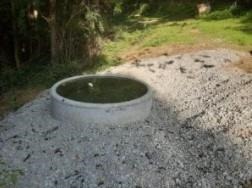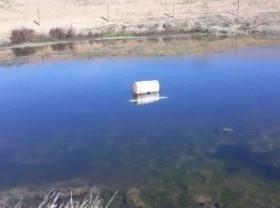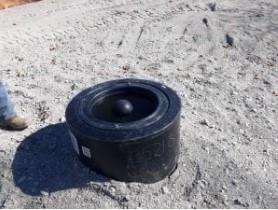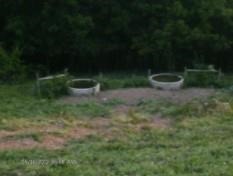By Chris Penrose
Over the years as I have worked with producers developing a grazing system, you would expect fencing to be the major issue. As the paddocks are set up, water almost always becomes the major issue. If you are fortunate enough to have reliable ground water or public water, this issue is minimized. I recall the droughts back in 2012 and 1988 and feed for livestock was not the issue, it was water. As creeks, springs and ponds dried up, options were limited and expensive, many had to haul water. On our family farm, I rely exclusively on creeks and springs and have developed most springs on the farm for the cattle. The first springs that were developed back in the 1960’s that had an estimated lifespan of 20 years lasted much longer and have been rebuilt except one that is still going strong. Since the drought of 88, I have developed the remaining springs to try to minimize issues in dry weather and provide multiple water sources in each paddock.

Originally constructed in the ’60’s, this spring tank was recently rebuilt.
An important consideration, if an option, is will the livestock go to the water or will you take the water to the livestock? When possible, it is almost always the best option to take the water to the livestock because water is generally the most powerful force determining where livestock will spend their time. A three year study at the Forage System Research Center in Missouri showed that when cattle had to travel more than 800 feet to water, uneven grazing occurred: overgrazing close to the water and undergrazing on the opposite end of the paddocks. In addition, when cattle have to travel long distances to water, they tend to go in groups so an adequate supply of water needs to be available so all of the cattle can receive an adequate supply. Water close to cattle does not need as much available water but needs the ability to re-fill the tank rapidly if it is small. Studies also demonstrate that water close to cattle will improve weight gains.

A floating barrel suspends the pond water inlet 12-18 inches below the surface
How about water quality? If you have ponds or streams in paddocks and use them as a water source, we know that when it is hot, cattle like to stand in water, especially non-moving, shaded water, which will reduce quality. Pollution can come from erosion along the banks of the ponds and streams, and from manure and urine while standing in the water. For ponds we do know that installing a tank with the pond as the source improves water quality, or fencing out the pond with a small corner with a stone base and limiting standing in the pond will improve quality. A friend of mine installed a gravity fed, frost free tank below his pond as a clean, reliable source of water.

This tank is gravity fed from the pond.
There are different thoughts on what to do with streams in paddocks and I am not sure what the right answers is, but I do know that rotating to paddocks without streams limits exposure to paddocks with streams. Cattle like to stand in water not moving, so if you make part of a stream available for water, use a portion where the water is moving with a stone base. Finally, if given a choice, cattle that have access to clean water from a different source they will generally use that. I have one paddock where I had a spring developed with a stream running through it and the cattle use the stream less. Finally, I do know that during the summer, if your cattle are on fescue and you have a stream with standing water and shade, I bet I know where they will be during the day.
Just some final thoughts. Ideally, we want clean, fresh water in every paddock, within 500-600 feet of the forage, and smaller tanks need to have a quick recharge. If possible, if water sources are in a fixed location, can they serve multiple paddocks? I have one location with two 500 tanks in a lot that is available to three paddocks. I have another location with two tanks from two different springs together right on the fence line that is available to two paddocks and the water lines are joined together so if one spring goes dry, the other can supply both tanks.

Twin tanks served by two springs tied together, and situated to service multiple paddocks.
What is interesting to note on our farm is that every old barn had a cistern to capture water. If you calculate the square feet of a building and the amount of precipitation we receive each year, there is potential to capture a significant amount of water for livestock. We have one producer in Morgan County that has a large holding tank by his barn and water is supplied by a spring and rain off the roof. It is then pumped to the top of a hill where the water then flows to tanks in each of the paddocks below. When it is dry, water is everything!
Source : osu.edu